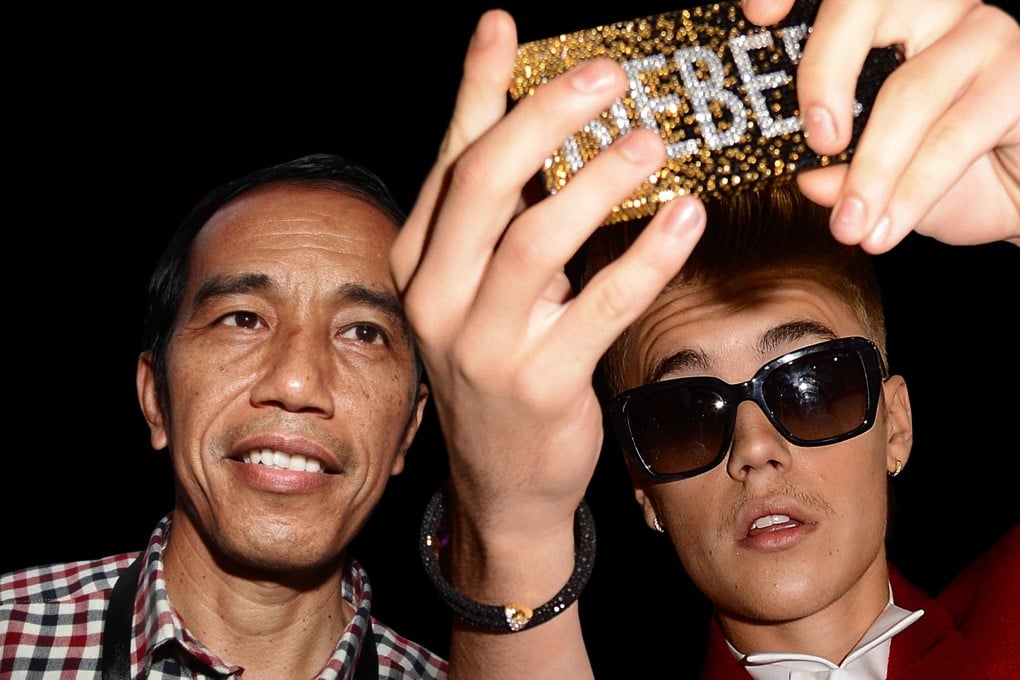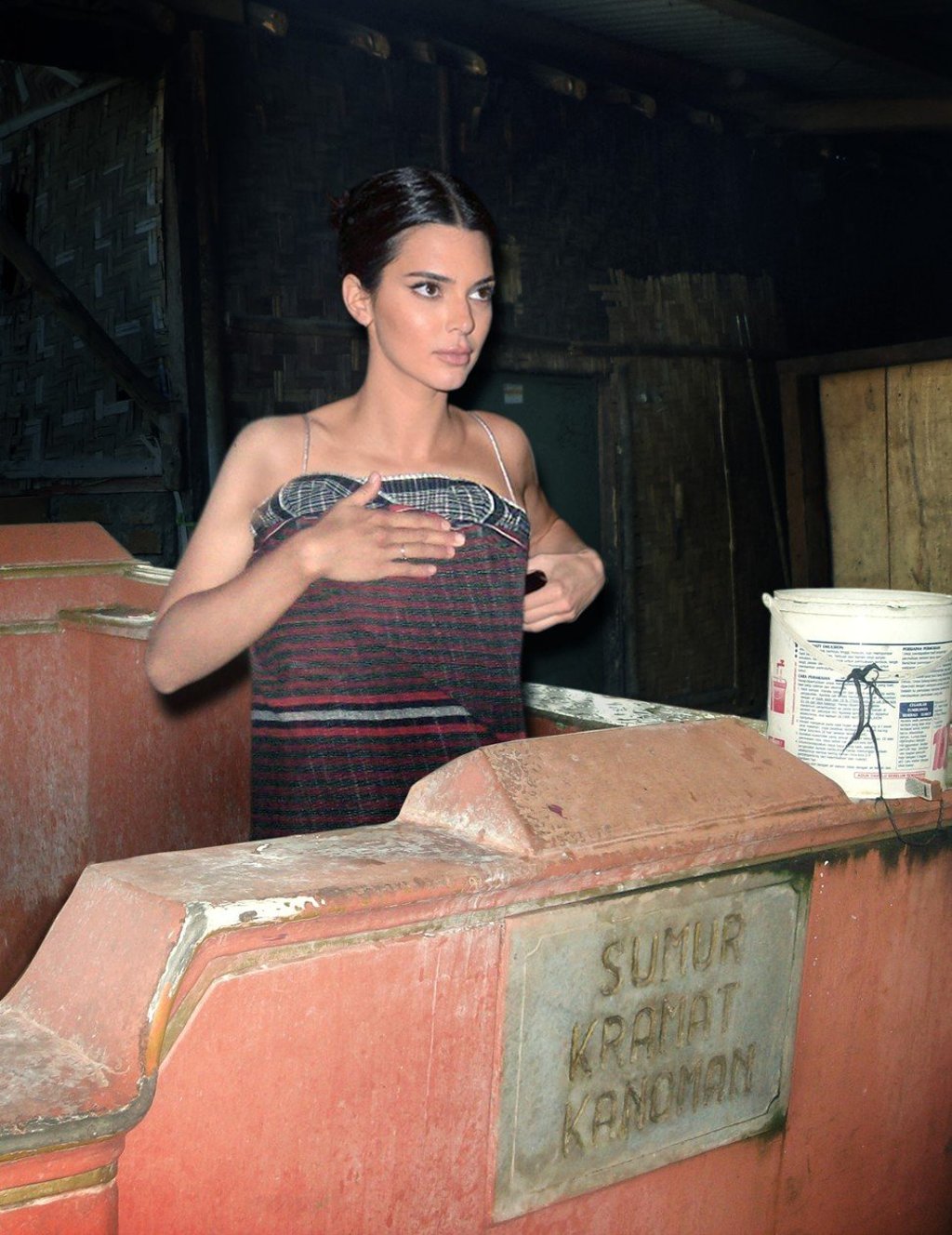From Justin Bieber to Leonardo DiCaprio to Angelina Jolie, fake celebrity photos are Indonesian’s tongue-in-cheek comment on fame
- Artist Agan Harahap Photoshops celebrities into humble Indonesian surroundings
- His photos of Hollywood celebrities and Indonesian politicians have found fame online

Startling images have swept the internet in Indonesia in recent years: photos of Indonesian President Joko Widodo as a spiky-haired punk rocker; of American celebrities Miley Cyrus and Megan Fox embracing a former Jakarta governor; and one of a handcuffed Angelina Jolie in the custody of the country’s police.
All these photos are fake, the creations of Agan Harahap, an Indonesian artist who has made a name for himself by creating believable images of Western celebrities in humble Indonesian surroundings. Some of Agan’s stars are hanging out at street-food stalls, others languish in decrepit jails. Some are images of famously at-war politicians standing next to one another and smiling joyfully.
In an era when most internet users are wary of digital manipulation and ignore obviously false photos, Agan’s work has consistently gone viral online as admirers post and repost his images. It’s hard to tell whether his followers believe the photos are real or whether they respect Agan’s artistry, his technical wizardry and sense of humour.
Poking fun at the world’s obsession with celebrities and the power of imagery in the internet era, Agan straddles the line between the absurdity of the situations in his images (“this can’t be real …”) and the slight hope that it might be (” … but it would be great if it was”).

Agan’s images have won him plenty of media coverage, both in Indonesia and beyond. Wired magazine dubbed his manipulated photos “classic celebrity Schadenfreude with a South Asian twist”, while ABC Australia described his work as “digital mischief” that served to warn Indonesians to “stop believing everything you see online”.
“What I am doing is simply responding to the happenings that I see on my social media feed,” Agan says. “Whether it is a celebrity, political, religion-related or culture-related story – all the things that get people fired up and talking in this digital age.”
